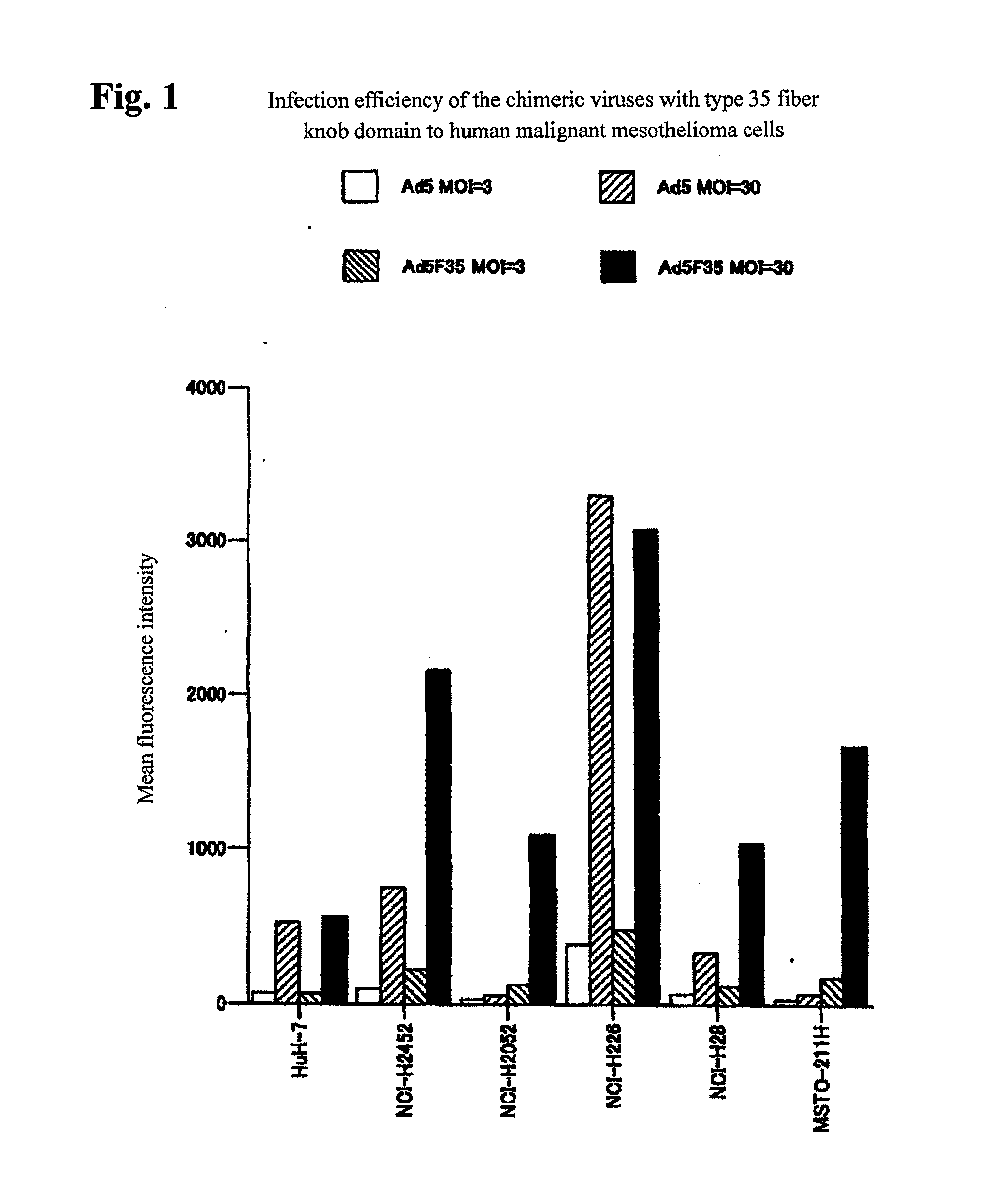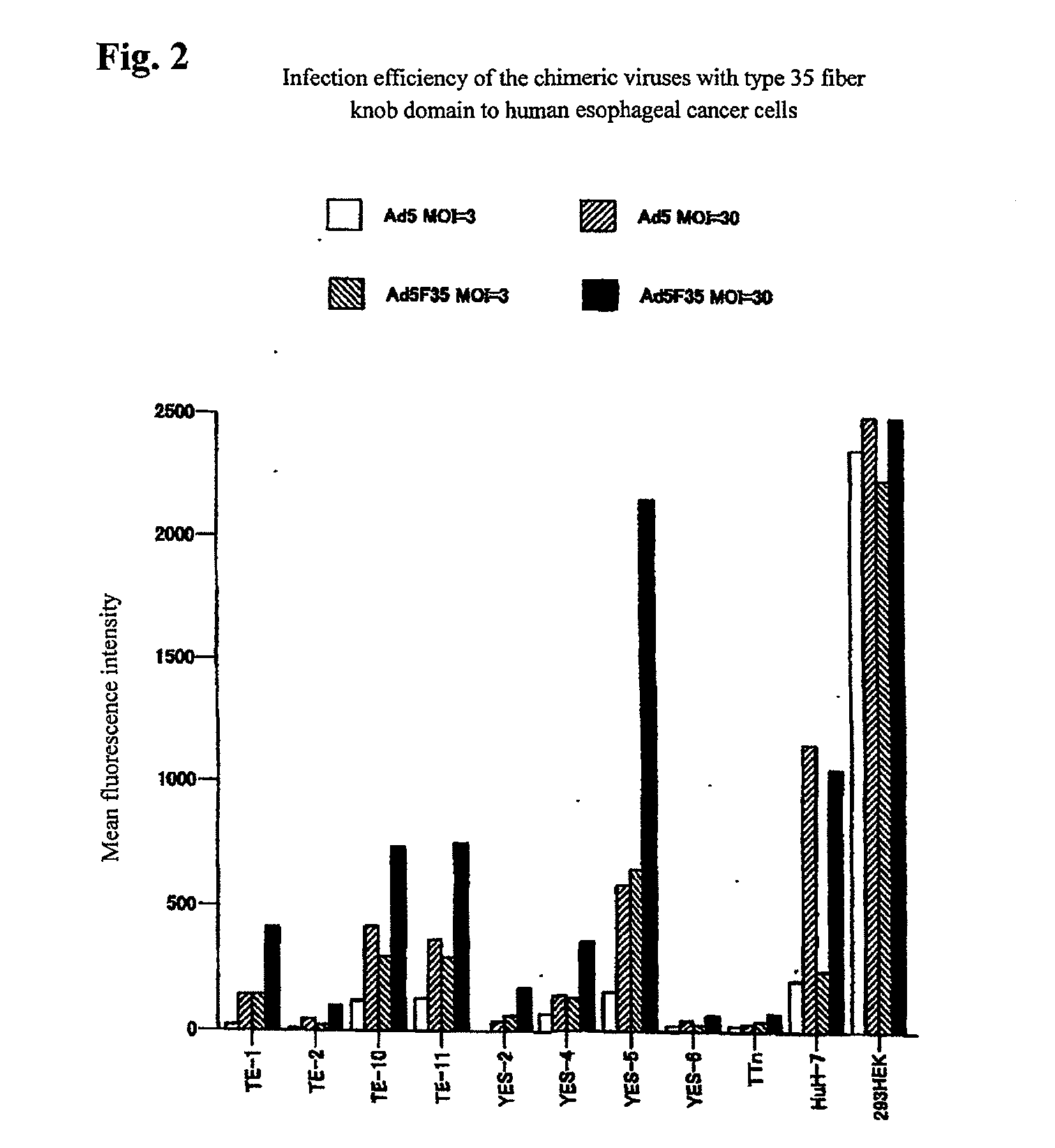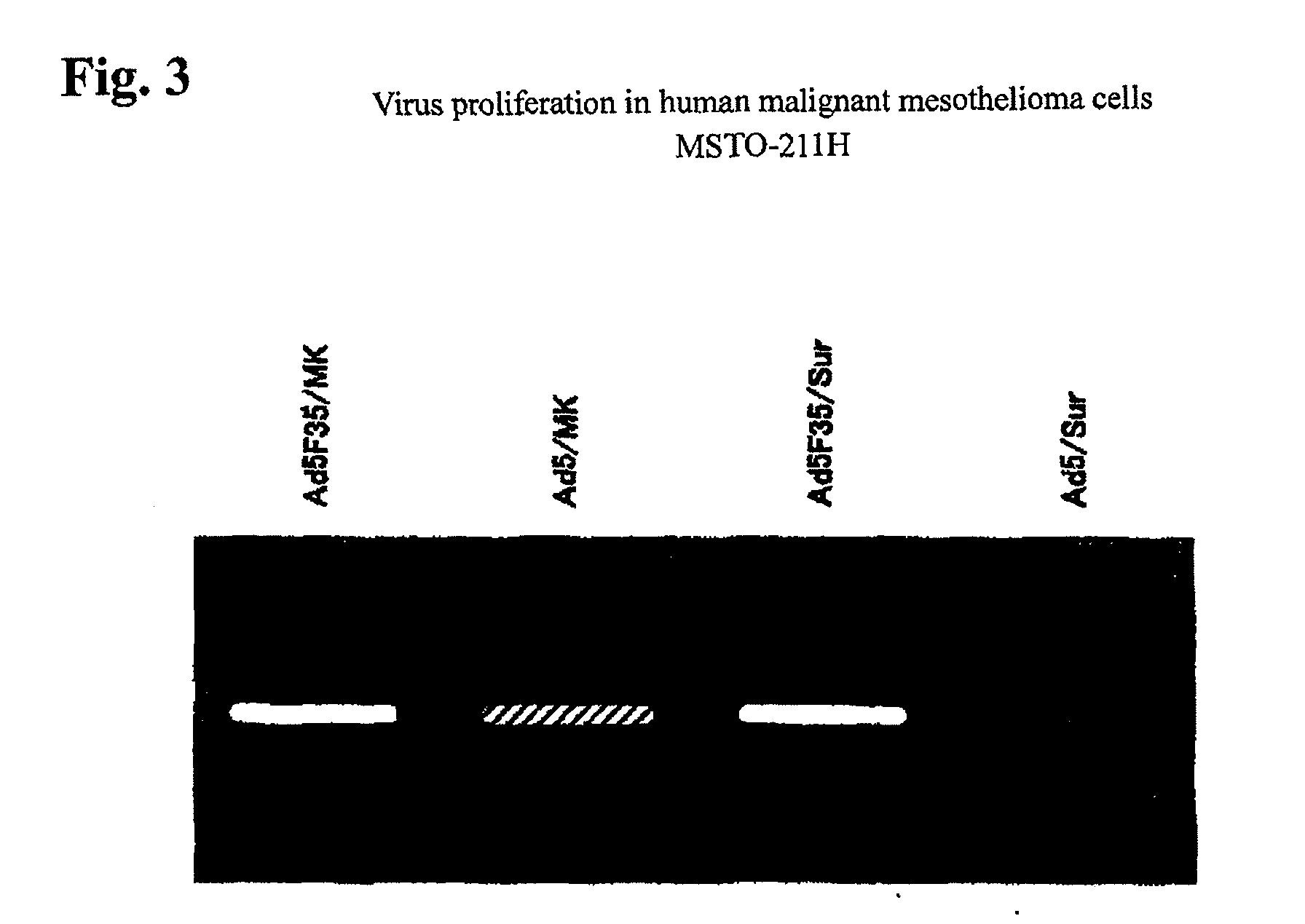Chimeric adenovirus, method for producing the same and pharmaceutical using the same
- Summary
- Abstract
- Description
- Claims
- Application Information
AI Technical Summary
Benefits of technology
Problems solved by technology
Method used
Image
Examples
reference example 1
[0043]Taking esophageal cancer and mesothelioma malignant for instance, the expression levels of CAR molecules and CD46 were examined using flow cytometry. HEK293 cells used for adenoviruses production were used as a control. The results are shown in Table 1.
TABLE 1CD46CellsCAR expression (%)expression (%)NCI-H245236118NCI-H20521175NCI-H22684165NCI-H2818150MSTO-211H256TE-112321TE-234160TE-1026100TE-1139290YES-20132YES-447135YES-527176YES-653120T. Tn14209HEK293100100
[0044]In Table 1, NCI-H2452, NCI-H2052, NCI-H226, NCI-H28 and MSTO-211H cells are human malignant mesothelioma cells, and the other cells are human esophageal cancer cells. The expression levels of CAR and CD46 of each cell are expressed as percentage of the standard based on human fetal kidney cells (HEK293 cells) as 100%. It is obvious from Table 1 that the human malignant mesothelioma and esophageal cancer cells have lower CAR molecule expression levels than that of the control HEK263 cells and higher CD46 molecule exp...
reference example 2
[0045]Gene transfer efficiency of chimeric adenoviruses having the type 35 fiber knob domain was examined. The chimeric viruses having the type 35 fiber knob domain among the commercially available chimeric adenovirus vectors from Avior Therapeutics, Inc. (Seattle, U.S.A.) were used to examine the gene transfer efficiency for human malignant mesothelioma and for human esophageal cancer (the cells used were HuH-7 human hepatocellular carcinoma cells and the other cells identical to those shown in Table 1). Vectors which can express the GFP gene with the cytomegalovirus promoter, the prototype type 5 (Ad5-GFP) or the chimeric vector using the type 35 fiber knob domain (Ad5F35-GFP), were used to infect the cells at a certain MOI for 30 minutes, the cells were then washed, and 2 days thereafter, the GFP expression levels were examined on the basis of mean fluorescence intensity as an index with flow cytometry. The results are shown in FIG. 1 (malignant mesothelioma) and FIG. 2 (esophage...
example 1
[0047]A conventional method to produce replication-incompetent chimeric adenoviruses depends on a homologous gene recombination mechanism in E. coli or HEK293 cells as shown in a kit from Avior Therapeutics Inc., to produce replication-incompetent chimeric adenoviruses, in which inserting a gene of interest into the LHSP vector and simultaneously transfecting it with the RHSP vector having the type 35 fiber knob domain into HEK293 cells to produce the viruses by homologous gene recombination in the cells. This method is not only extremely ineffective but also extremely low in the frequency to achieve intracellular homologous gene recombination; moreover, it requires examination to see whether individual plaques obtained contain viruses of interest.
[0048]Therefore, the present invention made it possible that all the obtained plaques were to contain viruses of interest by transfecting HEK293 cells as well as other virus-producing packaging cells with a single DNA unit, which are prepa...
PUM
| Property | Measurement | Unit |
|---|---|---|
| Cytotoxicity | aaaaa | aaaaa |
Abstract
Description
Claims
Application Information
 Login to View More
Login to View More - R&D
- Intellectual Property
- Life Sciences
- Materials
- Tech Scout
- Unparalleled Data Quality
- Higher Quality Content
- 60% Fewer Hallucinations
Browse by: Latest US Patents, China's latest patents, Technical Efficacy Thesaurus, Application Domain, Technology Topic, Popular Technical Reports.
© 2025 PatSnap. All rights reserved.Legal|Privacy policy|Modern Slavery Act Transparency Statement|Sitemap|About US| Contact US: help@patsnap.com



